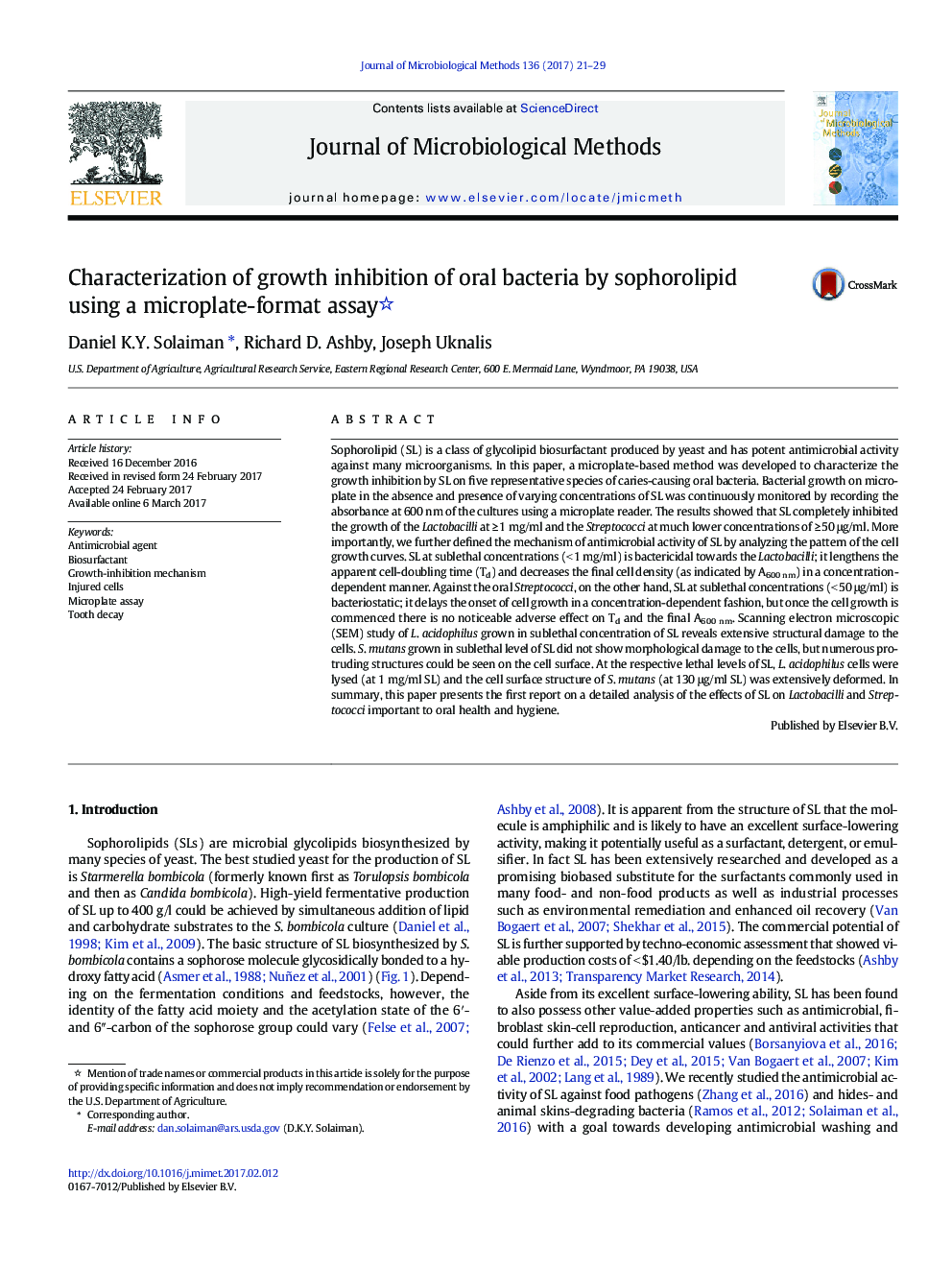| کد مقاله | کد نشریه | سال انتشار | مقاله انگلیسی | نسخه تمام متن |
|---|---|---|---|---|
| 5522220 | 1545907 | 2017 | 9 صفحه PDF | دانلود رایگان |
- Microplate-format assay is developed to characterize growth inhibition of oral bacteria
- Sophorolipid biosurfactant is growth inhibitory to oral bacteria
- Sophorolipid is much more effective against Streptococci than it is against Lactobacilli
- SEM study showed that sophorolipid lysed Lactobacilli, and damaged the cell surface structure of Streptococci
Sophorolipid (SL) is a class of glycolipid biosurfactant produced by yeast and has potent antimicrobial activity against many microorganisms. In this paper, a microplate-based method was developed to characterize the growth inhibition by SL on five representative species of caries-causing oral bacteria. Bacterial growth on microplate in the absence and presence of varying concentrations of SL was continuously monitored by recording the absorbance at 600 nm of the cultures using a microplate reader. The results showed that SL completely inhibited the growth of the Lactobacilli at â¥Â 1 mg/ml and the Streptococci at much lower concentrations of â¥Â 50 μg/ml. More importantly, we further defined the mechanism of antimicrobial activity of SL by analyzing the pattern of the cell growth curves. SL at sublethal concentrations (< 1 mg/ml) is bactericidal towards the Lactobacilli; it lengthens the apparent cell-doubling time (Td) and decreases the final cell density (as indicated by A600 nm) in a concentration-dependent manner. Against the oral Streptococci, on the other hand, SL at sublethal concentrations (< 50 μg/ml) is bacteriostatic; it delays the onset of cell growth in a concentration-dependent fashion, but once the cell growth is commenced there is no noticeable adverse effect on Td and the final A600 nm. Scanning electron microscopic (SEM) study of L. acidophilus grown in sublethal concentration of SL reveals extensive structural damage to the cells. S. mutans grown in sublethal level of SL did not show morphological damage to the cells, but numerous protruding structures could be seen on the cell surface. At the respective lethal levels of SL, L. acidophilus cells were lysed (at 1 mg/ml SL) and the cell surface structure of S. mutans (at 130 μg/ml SL) was extensively deformed. In summary, this paper presents the first report on a detailed analysis of the effects of SL on Lactobacilli and Streptococci important to oral health and hygiene.
Journal: Journal of Microbiological Methods - Volume 136, May 2017, Pages 21-29
